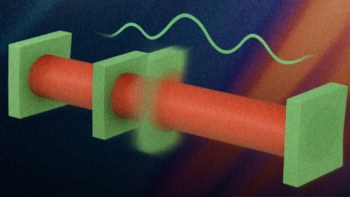
Two related studies have demonstrated the effectiveness of low-temperature plasma for killing drug-resistant bacteria on human skin – one of the biggest challenges facing modern medicine. In one study, researchers in Germany describe a device that can disinfect hands in seconds, while in the other they reveal how low-temperature plasmas can safely disinfect open wounds.
Bacterial infection is a serious problem in hospitals. Studies show that the infamous superbug methicillin-resistant Straphylococcus Aureus (MRSA) alone infects 100,000 people every year in the US and results in about 18,000 deaths.
The best way to tackle the problem is disinfectant, but this can be laborious. Every day hospital staff must disinfect their hands on dozens of occasions, each taking up to several minutes. Keeping open wounds free from bacteria can be even harder.
Cool plasmas
In recent years, scientists have begun to investigate how plasmas – gases of ions and free electrons – can help. A fully ionized plasma can have a temperature in the region of 100,000°, which is far too hot for human tissue, but the temperature can be reduced if the degree of ionization is much lower, at say one part in a billion.
Gregor Morfill and colleagues at the Max-Planck Institute for Extraterrestrial Physics in Garching have shown how low-temperature plasmas can be used to clean hands conveniently in seconds. Their device contains a slab of dielectric material sandwiched between a solid electrode and a sheet of wire mesh. When they put a large voltage of 18 kV across the solid electrode and mesh, the resultant strong electric field generates numerous nano- and microsecond discharges that partially ionize the air. This ionization leaves ultraviolet radiation and a cocktail of chemical products – including ozone, nitrogen oxide, hydrogen peroxide and free radicals – which together kill bacteria.
“It will even sterilize your socks, although you should probably wash them too” Gregor Morfill, Max-Planck Institute for Extraterrestrial Physics
Morfill told physicsworld.com that hospital staff could use the device routinely to clean hands and, if so desired, feet. “It will even sterilize your socks, although you should probably wash them too,” he adds.
With other colleagues at the Max-Planck Institute, Morfill has examined the best way to use low-temperature plasma for cleaning open wounds. In some ways this is more difficult because ideally the plasma would not only kill bacteria but also prevent further growth of bacteria without having any negative side-effects on the living human cells.
Chemicals and plasma
The researchers performed a series of tests in which they subjected E. coli bacteria to both the chemical and UV products of plasma and, by shielding the bacteria with a quartz disc, just the UV products. They found that the UV radiation tended to kill bacteria in the short term, whereas the chemical products cause a lasting “after irradiation” inhibition of bacterial growth. With this knowledge, the researchers could determine the right composition and dosage of plasmas for future devices.
One of the group members, Tetyana Nosenko, said that the next step is to optimize the plasma composition for different types of wound, such as diabetic ulcers or those containing blood.
The research is described in two papers in the New Journal of Physics.



